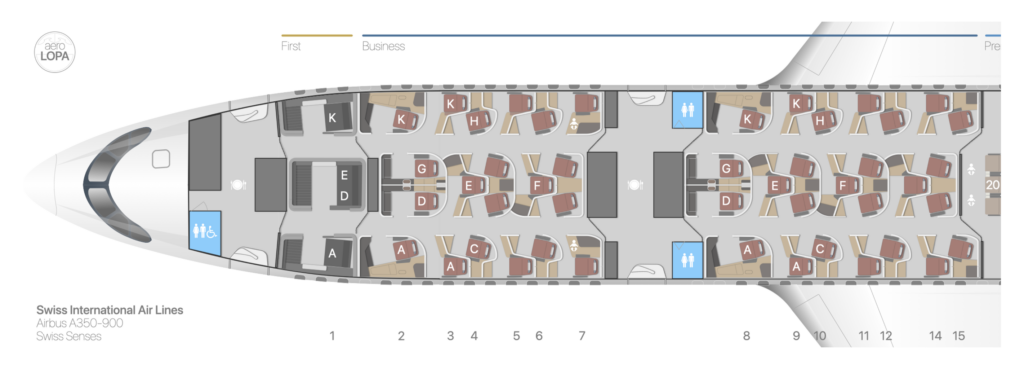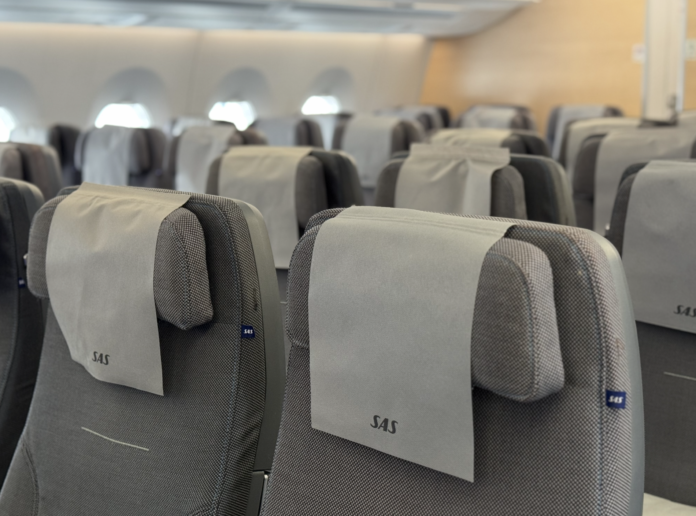Traveling by air is often an exhilarating experience that opens up a world of adventure and exploration. However, the key to a best travel experience often boils down to your comfort during the flight. A significant factor influencing this comfort is the seat you occupy. Understanding where to sit can transform your flight from a stressful ordeal to a pleasurable journey.
This guide will help you navigate the complex world of airplane seating to ensure you choose the best seat and enjoy the most comfortable flight possible.
Understanding Airplane Seating: A Brief Overview
Airplane seating arrangements are influenced by several factors, including the type of aircraft, airline policies, and class of service. The most common seating arrangement can be found in economy class, where seats are typically more compact, offering between 28 to 34 inches of pitch and 16 to 18 inches in width. Yet, business and first-class seating offers more space, luxury, and amenities, promising a more comfortable journey if you can afford the upgrade.
The Airbus A320 and Boeing 737 are among the most common aircraft. The A320 tends to offer slightly wider seats than Boeing, which might appeal to passengers prioritizing comfort. Budget airlines often pack seats to maximize capacity, which can lead to reduced comfort levels compared to national carriers. Hence, understanding the aircraft model is crucial, as each comes with unique seating configurations and comfort levels.
Strategies for Selecting the Right Seat
Choosing the best seat on an airplane is ultimately a matter of prioritizing your needs and preferences. Here are some thoughtful strategies that can aid in selecting the ideal seat:
- Know Your Preferences: Whether you desire an aisle seat for easy access, a window seat for the view, or extra legroom for comfort, defining your priorities is essential.
- Research Your Aircraft: Use the booking confirmation or tools like SeatGuru to determine your plane’s layout, helping guide you to suitable seating options.
- Consider the Flight Duration: For longer flights, prioritize comfort and amenities by opting for premium economy or considering bulkhead or exit row seats for more space.
- Early Booking is Key: The earlier you book, the better chance you have of securing your desired seat. Airlines often release the seat map at the time of booking, so moving swiftly can capture optimal seating.
- Leverage Airline Loyalty Programs: Frequent flyer programs can occasionally afford you priority boarding and access to more desirable seats at no extra cost.
Pros and Cons of Popular Seating Choices
Each seating type on an airplane comes with distinctive offerings, making it essential to weigh their advantages and drawbacks:
- Window Seats: These offer breathtaking views and added privacy but can pose challenges for passengers who make frequent restroom visits.
- Aisle Seats: Preferred by those seeking easy movement, aisle seats offer freedom at the cost of potential disturbances from cabin traffic.
- Middle Seats: Generally undesired due to privacy and space constraints, middle seats occasionally allow for isolated seating when flights are not full. Aisle and window seats are chosen first, often leaving middle seats at the back unfilled as seen here.
- Exit Row Seats: Provide additional legroom and often entail being farther from screens or amenities, with the added responsibility of assisting in emergencies.
- Bulkhead Seats: While delivering a spacious feel due to the absence of other seats in front, these seats lack under-seat storage and may sometimes have restricted recline.
The Importance of Legroom and How to Maximize It
Legroom is one of the most coveted aspects of in-flight comfort, varying considerably across aircraft and classes. Here are ways to maximize available legroom:
- Exit Row Seats: These seats are among the most spacious, providing significant legroom due to emergency exit regulations. They’re perfect for taller passengers willing to assist during emergencies. In fact, the exit row has the most legroom.
- Premium Economy Options: Many airlines offer a mid-tier class with enhanced seating space without the cost of a full business class ticket.
- Use Frequent Flyer Privileges: Loyalty programs often allow advanced seat selection, including more spacious seats, which can enhance your experience significantly.
- Aisle Seats Advantage: Although they may not offer additional pitch, aisle seats allow lateral space to extend your legs into the aisle while considering the foot traffic.
Tips for Securing Extra Comfort and Amenities
For a travel experience that combines comfort with added conveniences, consider the following tips:
- Pack Comfort Aids: Travel with accessories such as neck pillows, noise-canceling headphones, and a cozy blanket to ameliorate discomfort, especially on long-haul flights.
- Stay Hydrated: Airplane cabins have dry conditions that can dehydrate. Drinking plenty of water can help maintain comfort and energy levels.
- Move Regularly: Periodically stretching or walking reduces the risk of cramps and enhances overall comfort.
- Upgrade When Possible: Inquire politely at check-in about luggage upgrades or better seat availability. Occasionally, there’s room for affordable upgrades, enhancing your flying experience.
Navigating the Noise: Seeking Quietude in Flight
Combatting noise can be pivotal for a serene flying experience, especially on long journeys. Consider the following advice for peace in the skies:
- Select Seats at the Front: Generally quieter, these seats are distant from engine noise, particularly on aircraft with rear-mounted engines.
- Avoid High Traffic Areas: Seats near lavatories and galleys draw increased traffic from passengers seeking restrooms or refreshments and the movements of crew members.
- Invest in Noise-Canceling Gear: Headphones can greatly diminish a noisy environment, allowing you to retreat into silence or your choice of entertainment.
Enhancing Safety Through Strategic Seat Selection
Though air travel is safe, seating choices can influence perceptions of safety:
- Rear of the Aircraft: Often regarded as safer for crash survival, the back of the plane also tends to be quieter due to distance from engines.
- Near Exits: Seats near emergency exits can facilitate an expedient evacuation, crucial during emergencies.
- Understand Safety Protocols: Beyond seating choices, familiarizing yourself with the nearest exits and safety demonstrations enhances your preparedness.
Leveraging Online Tools for Optimal Seat Maps
Digital resources provide unprecedented insights into seating charts, empowering you to make informed choices:
- SeatGuru and AeroLOPA: Offer detailed airplane seat maps with reviews, cautioning you of potentially disadvantageous seats.
- FlightAware: Provides real-time insights on flights and seating layout, equipping you with essential knowledge for better seat planning.
- Check Airline Websites: Many airlines offer interactive seat maps during booking, allowing you to visualize seat placement and amenities.

Factors Influencing Comfort on Long-Haul Flights
Long-haul flights require additional considerations for a comfortable journey:
- Choose Larger Aircraft: Wide-bodied planes are engineered to handle longer distances, often featuring enhanced passenger comforts and reduced turbulence impact.
- Entertainment Preparation: Keep yourself entertained with personal electronic devices stocked with movies, music, or reading material for a distraction from monotony.
- Focus on Sleep: For overnight flights, prepare with sleep aids like masks and earplugs. A window seat can offer additional comfort without aisle disturbances.
Traveling with Companions: The Best Group Seating Arrangements
When traveling with friends, family, or colleagues, a well-thought-out seating arrangement can enhance your collective experience:
- Family Matters: Bulkhead seating is often equipped with bassinets for infants, making it suitable for families while providing quick access to lavatories.
- Couples’ Choices: Opt for configurations where two-seater rows allow intimacy without strangers in between.
- Groups of Three or More: Consider rows with multiple seats in the middle section to keep your group together.
Navigating the complexities of airplane seating is crucial for ensuring a comfortable and enjoyable flight. By understanding aircraft layouts and utilizing digital tools, you can strategically choose a seat that meets your comfort, safety, and convenience needs. With this guide, you’re equipped to make well-informed decisions and secure the best seat, leading to a more pleasurable journey. Happy travels and safe skies!


